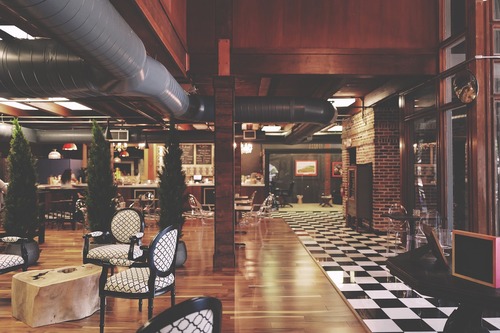Table of Contents
- Importance Of Social Connection
- Health And Wellness Programs
- Creating Engaging Activities
- Nutrition And Dining Experience
- Safety And Security
- Family Involvement
- Technology Integration
- Benefits Of Natural Environments
Importance Of Social Connection
Social connection is vital for seniors’ well-being. Having a supportive community can alleviate feelings of loneliness and depression. For those considering retirement communities North Carolina, finding a place emphasizing strong social ties is key. According to the National Institutes of Health, strong social connections can lead to a longer and healthier life, making it crucial for seniors to stay socially active. These interactions help reduce stress, improve mood, and provide a sense of purpose, essential for maintaining mental health and emotional well-being.
A thriving social environment can be cultivated through organized events, group activities, and communal spaces where seniors can interact freely. By encouraging these interactions, senior communities can help residents build lasting friendships and support networks that significantly enhance their quality of life.
Health And Wellness Programs
Health and wellness programs are indispensable in senior living communities. These programs should encompass a range of activities that promote physical, mental, and emotional health. Exercise classes such as yoga, tai chi, or dancing can help seniors stay active and maintain mobility. Mental health programs might include meditation sessions, counseling services, and cognitive exercises designed to keep the mind sharp.
Regular health check-ups and screenings are also vital parts of these programs. By keeping track of their health metrics, seniors can proactively manage their well-being with the support of healthcare professionals. Studies have shown that consistent participation in such programs significantly improves seniors’ quality of life and physical and mental well-being. Moreover, community-based health initiatives can foster a sense of camaraderie among participants, further enriching their communal and social experiences.
Creating Engaging Activities
Engaging activities are key to keeping seniors both mentally and physically active. Activities such as art classes, gardening, and social events provide not just entertainment but also encourage social interaction and personal growth. A vibrant activity calendar can vastly enrich the day-to-day lives of senior community members. For instance, artistic endeavors like painting or crafting can be incredibly therapeutic and provide a creative outlet for self-expression.
Gardening allows seniors to engage with nature, providing physical activity and a sense of accomplishment as they nurture plants. Social events, including game nights, movie screenings, and group outings, offer opportunities for residents to bond and create shared memories. Additionally, workshops and guest lectures can stimulate intellectual curiosity and encourage lifelong learning, ensuring that the community’s activities cater to various interests and preferences.
Nutrition And Dining Experience
Sustaining senior health is mostly dependent on diet. A diverse dining experience that offers balanced meals can enhance overall well-being. The Centers for Disease Control and Prevention (CDC) highlights that good nutrition links to better health outcomes and an improved quality of life in seniors. Therefore, senior living communities should prioritize offering nutritious and enjoyable dining experiences.
Meals should be carefully planned to ensure they meet the dietary needs of seniors, incorporating a variety of fruits, vegetables, lean proteins, and whole grains. Special dietary requirements, such as low-sodium or diabetic-friendly options, should be readily available. Furthermore, the dining experience should be a social occasion, with communal dining areas encouraging interaction and camaraderie among residents. Pleasant and inviting dining settings can make meals a highlight of the day, fostering physical health and social well-being.
Safety And Security
Ensuring safety and security in senior living communities is essential. This includes secure living spaces, emergency response systems, and regular safety drills. When seniors feel secure, they can enjoy their environment more freely and comfortably, leading to a higher quality of life. Security features might include well-lit pathways, secure entry systems, and monitoring services to ensure residents’ safety.
Emergency response systems should be easily accessible, with staff trained to handle various emergencies efficiently. Regular safety drills can prepare residents and staff for emergencies, ensuring everyone knows their roles and responsibilities. Additionally, promoting a culture of vigilance and safety awareness within the community can further enhance the sense of security, giving residents peace of mind as they go about their daily activities.
Family Involvement
Family involvement is crucial in supporting seniors. Regular visits, family-inclusive events, and open communication lines help maintain strong family ties. This involvement reassures seniors that they are loved and valued, vital for their emotional health and happiness.
Communities can foster family involvement by organizing events encouraging family participation, such as holiday celebrations, family game nights, and open houses. Maintaining open communication channels through newsletters, family meetings, and digital updates ensures family members stay informed and engaged in their loved ones’ lives. Encouraging family members to volunteer and participate in community activities can strengthen the bond between residents and their families, enhancing the community spirit.
Technology Integration
Incorporating technology in senior living communities can significantly enhance daily life. Technology can provide convenience, safety, and new avenues for connection and learning, from telehealth services and smart home devices to social media and online learning platforms. Telehealth services offer easy access to healthcare professionals, allowing seniors to manage their health more effectively without traveling.
Voice-activated assistants and controlled lighting systems are two examples of smart home appliances that can improve safety and independence by simplifying daily duties. Social media platforms and video calling services keep seniors connected with family and friends, promoting social interaction and reducing feelings of isolation. Online learning platforms offer endless opportunities for seniors to explore new interests and develop new skills, contributing to their intellectual and personal growth. By embracing technology, senior living communities can create a modern, supportive environment that caters to the diverse needs of their residents.
Benefits Of Natural Environments
Natural environments offer numerous benefits for seniors, including reduced stress and improved mental health. Access to gardens, walking trails, and green spaces encourages outdoor activities, which are beneficial for physical health and provide a serene setting for relaxation. Being outside has been shown to lower blood pressure, lessen anxiety, and improve mood, which makes it a crucial part of an all-encompassing senior care strategy.
Natural surroundings can also stimulate social interactions, group activities, and community gatherings. Gardening programs, nature walks, and outdoor fitness classes can integrate the beauty of nature into daily routines, promoting a healthier and more fulfilling lifestyle for seniors. By creating spaces that embrace the natural environment, senior living communities can offer a tranquil, rejuvenating atmosphere supporting physical and emotional well-being.


